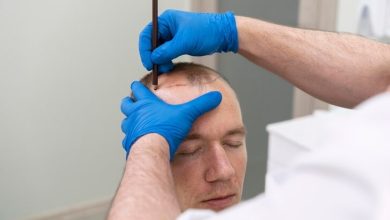Which Methods of Massage Therapy Help with Long-Term Pain?

The origins of massage, the many types of massage that are offered, and most importantly, how massage may help you with your chronic pain!
Many pain management strategies include a significant amount of massage therapy. Massage is frequently used to treat a wide range of medical conditions and can be extremely beneficial for people with chronic pain. “Patterned and purposeful manipulation of soft tissue for therapeutic purposes to prevent or reduce pain, spasm, tension, or stress and to promote health and wellness,” is how massage therapy is defined.
History of massage therapy
Massage has been used to heal illnesses since the second century. The use of massage is first documented in China and Egypt. The earliest known book on massage was a Chinese book titled “The Yellow Emperor’s Classic Book of Internal Medicine.” It was released in 1949 in England and is still often used by anyone learning about massage and massage therapist training. Massage is shown as a component of ancient Egyptian medicine even in the artwork found in their tombs.
Swedish physician Per Henril Ling created the “Swedish Movement System” of massage techniques in the 1800s. This served as the foundation for Swedish massage as we know it today! The benefits that massage may have on the body and the mind started to be studied and respected globally. Since then, a variety of massage techniques have emerged, and additional advantages have been found.
Benefits of massage on chronic pain
Stress levels may increase as a result of chronic pain. Your body is kept in a constant state of “fight or flight” by prolonged stress. This indicates that all of your body’s resources are directed toward the areas of your body that would require action. Unfortunately, this causes your body to work too hard because other parts don’t get the resources they require. Over time, your muscles tighten up, which can increase pain and limit mobility. Because your body is physically exhausted during prolonged stress, fatigue may worsen. Sleeping difficulties, problems with your mental health, and problems with your digestive system may all result. These are just a few of the effects of persistent stress, but it goes without saying that stress exacerbates the signs and symptoms of chronic pain.
It might be challenging to stop the cycle of stress and suffering. However, one strategy that may be useful is massage. In this thorough investigation, it was shown that massages may lower cortisol (the stress hormone) levels by as much as 31%! This suggests that massage therapy is quite successful in lowering stress levels, which in turn lowers the incidence of chronic pain.
The research also discovered that serotonin levels rose by 28% and dopamine levels rose by 31% during massage. Serotonin is a neurotransmitter found in our bodies that, among other important functions, aids in mood maintenance. It encourages joy and a sense of emotional well-being. Dopamine is essential to our ability to enjoy ourselves and be joyful. It also aids in maintaining our motivation and our attention on the activity at hand.
We are more likely to have a steady mood and a pleasant outlook when these two substances are boosted inside our bodies. Since our thoughts have an impact on how much pain we experience, having more optimistic thoughts can help us feel less stressed and stop thinking negatively about our pain. We may combat comorbid mental disease with the aid of a more stable thinking, which, once again, results in less feelings of chronic pain. We are more likely to adapt (helpful)ly deal with our chronic pain when we have a more optimistic outlook on life. We’re probably more determined to continue with our therapies and more upbeat about the future.
Muscle tension is a problem for many people with chronic pain. Increased stress levels, coexisting medical disorders, functional decline, and other factors may all contribute to this. In addition to limiting the patient’s range of motion and causing excruciating discomfort, muscle tension may also lead to decreased activity levels. The tension in the muscles may be released with massage, which can reduce discomfort and promote relaxation. For example, if you spend a lot of time on foot and experience tension in the legs, you can greatly benefit from a foot massage machine.
Blood flow is improved during a massage, which aids in optimum bodily function and immune system health. Lymphatic drainage, which is simply your body getting rid of any toxins and is better able to combat illness and disease, may be helped by massage. Your body may be better able to combat the exhaustion that often accompanies pain if these pollutants are removed. Inflammation may be reduced by improved lymphatic drainage and blood flow. Inflammation may increase the symptoms of chronic pain when it becomes persistent, much like chronic pain. It is possible to lessen symptoms by treating inflammation.
According to a research on the impact of massage treatment on fibromyalgia patients, individuals who had frequent massages were able to sleep longer and deeper. We who experience chronic pain often struggle with insomnia. When you’re in discomfort and unable to get comfortable, it might be difficult to fall asleep. Numerous harmful effects of sleep deprivation include low energy, erratic moods, impaired cognitive function, and weakened immune system. Basically, symptoms of chronic pain might worsen when people are sleep deprived. Thus, by enhancing a patient’s capacity for sleep, the body and mind may get the rest they need to be at their best while awake.
The research also discovered that those who were getting massages had lower levels of “substance P.” Our nervous system receives critical information from “Substance P,” a neurotransmitter. It is “engaged in sensory and, most noticeably, nociceptive pathways” and reacts to external stress. Pain travels via nociceptive pathways. This implies that the amount of pain may be affected by “substance P.” Additionally, it may be present in inflammatory regions. Therefore, the fact that “substance P” was decreased in individuals who had massages suggests that massage therapy might alleviate pain and inflammation.
Many experts think massage has the ability to seal the pain gate, thereby preventing pain signals from reaching the brain, in light of the gate control hypothesis. The gate control hypothesis suggests that before sensory information reaches the brain, it must pass through a series of “gates” located throughout our nervous system. These “gates” either shut off or let in pain signals, allowing the brain to comprehend and respond to them. According to this idea, massage activates bigger nerve fibres close to the skin’s surface, which prompts a competing feeling to gain precedence and obstructs or blocks pain signals (closing the “gate”).
Gabapin 300mg and gabapentin 400mg used to treat a variety of nerve pain and damage conditions, including post-herpetic neuralgia and partial seizures (epilepsy).
With seizures episodes associated with epilepsy, the brain’s activity becomes abnormal, and patients may occasionally lose consciousness or awareness.
Nerve damage or other neurological conditions like trigeminal neuralgia, shingles, or neuropathy can cause neuralgia, a chronic back pain condition of the nerves.




